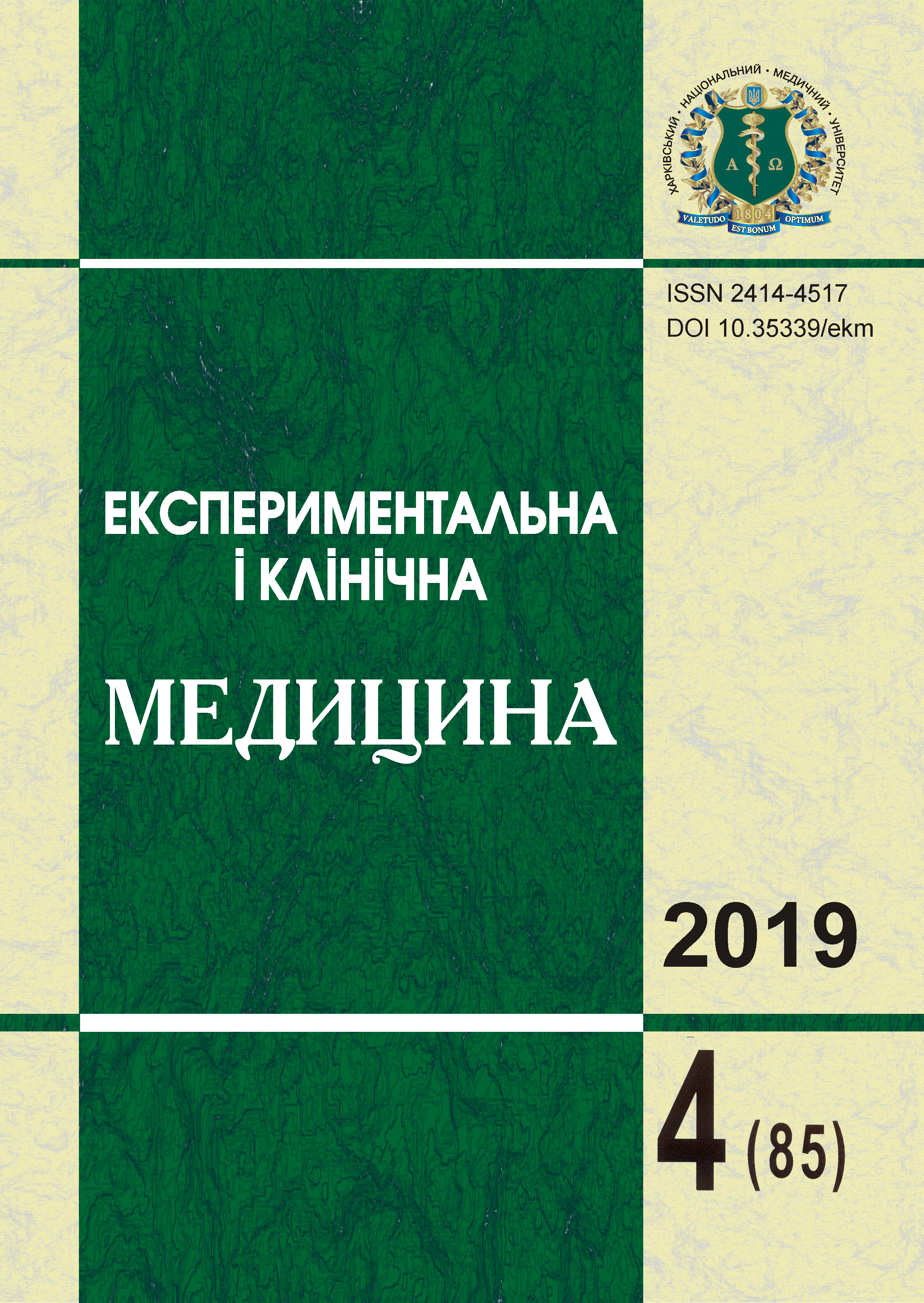Abstract
The purpose of this study is to develop a program of complex personalized program of psychosocial rehabilitation for patients with hallucinatory-paranoid disorders (HPR) in dementias of different genesis and stage of development and evaluate its effectiveness. The results of approbation of the developed program of complex personalized psychosocial rehabilitation of patients with HPR in dementias of different genesis and stage of development indicate its greater efficiency in comparison with traditional schemes of psychosocial rehabilitation patients of this category which do not consider socio-demographic, psychosocial features of the development and course of HPR in patients with dementia. The differences of the developed program are the differentiation of rehabilitation effects depending on the dominant sector (non-cognitive psychopathological disorders, cognitive disorders, social dysfunction and general medical problems); taking into account the nature of dual relations «patient with HPR in dementia - caregiver»; the state of the preserved resource of the patient in the cognitive mental, somatic and psychosocial spheres; sequence and phasing of restorative approaches.
References
Dementsiya: prioritet obshchestvennogo zdravookhraneniya - otchet VOZ [Dementia: a public health priority - WHO report] (2020), 112 p. [in Russian].
Raspopova N.Y. (2016). Dementsyya u lyts pozhyloho vozrasta (dyahnostyka, terapyya y profylaktyka) [Dementia in the elderly (diagnosis, therapy and prevention)]: ucheb. posobye. Almaty: KazNMU ym. S.D. Asfendyyarova, 108 p. [in Russian].
Wimo A., Winblad B., Jonsson L. (2010). The worldwide societal costs of dementia: Estimates for 2009. Alzheimers and Dementia, № 6 (2), pp. 98-103.
Uwakwe R. (2009). The epidemiology of dependence in older people in Nigeria: prevalence, determinants, informal care, and health service utilization. A 10/66 Dementia Research Group cross¬sectional survey. Journal of the American Geriatrics Society, vol. 57 (9), pp. 1620-1627.
Eriksson S. (2010). Developments in dementia strategy. International Journal of Geriatric Psychiatry, vol. 25 (9), pp. 885-886.
Woods B. (2010) Invited commentary on: Non-pharmacological interventions in dementia. Advances in Psychiatric Treatment, vol. 10, pp. 178-179.
Maruta N.A. (2019). Ranneye vmeshatelstvo pri dementsii: problemy i resheniya [Early intervention for dementia: problems and solutions]. Ukrayinskyy medychnyy chasopys - Ukrainian medical journal, https://www.umj.com.ua/wp/wpcontent/uploads/2019/04/Cognit.pdf?upload [in Russian].
Mishchenko T.S. (2014). Sosudistaya dementsiya (evolyutsiya vzglyadov na problemu) [Vascular dementia (evolution of views on the problem)]. Ukrains'kiy visnik psikhonevrologi - Ukrainian Bulletin of Psychoneurology, vol. 22, № 1 (78), pp. 5-10. [in Russian].
Mukadam N., Cooper C., Livingston G. (2011). A systematic review of ethnicity and pathways to care in dementia. International Journal of Geriatric Psychiatry, vol. 26, pp. 12-20.
Levin O.S. (2014). Diagnostika i lecheniye dementsii v klinicheskoy praktike [Diagnosis and treatment of dementia in clinical practice]. M.: MEDpress-inform, 256 p. [in Russian].
Suvorova I.A. (2011). Sosudistaya dementsiya: klinicheskoye techeniye, faktory riska, differentsirovannaya terapiya [Vascular dementia: clinical course, risk factors, differentiated therapy]. Doktor’s thesis. 14.01.11. Irkutsk [in Russian].
Koch T., Iliffe S. (2010). Rapid appraisal of barriers to the diagnosis and management of patients with dementia in primary care: a systematic review. BMC Family Practice, vol. 11 (52), pp. 1-8.
Teri L., McKenzie G.L., Pike K.C., Farran C.J. et al. (2010). Staff training in assisted living: evaluating treatment fidelity. International Journal of Geriatric Psychiatry, vol.18, pp. 502-509.
Lustenberger I., Schupbach B., Von Gunten A., Mosimann U. (2011). Psychotropic medication use in Swiss nursing homes. Swiss Medical Weekly, vol. 141, w13254.
Dua T., Barbui C., Clark N., Fleischmann A., Poznyak V. (2011). Evidence-based guidelines for mental, neurological, and substance use disorders in low - and middle-income countries: Summary of WHO recommendations. PLoS Medicine, vol. 8 (11), e1001122.
Low L.F., Anstey K.J., Lackersteen S.M., Camit M., Harrison F. et al. (2010). Recognition, attitudes and causal beliefs regarding dementia in Italian, Greek and Chinese Australians. Dementia and Geriatric Cognitive Disorders, vol. 30 (6), pp. 499-508.
Reisberg B., Auer S.R., Monteiro I.M. (1996). Behavioral pathology in Alzheimer's disease (BEHAVE-AD) rating scale. Int. Psychogeriatr., vol. 8 (3), pp. 301-308.
Havrylyuk A.O. (2016). Unifikovanyy klinichnyy protokol pervynnoyi, vtorynnoyi (spetsializovanoyi), tretynnoyi (vysokospetsializovanoyi) ta paliatyvnoyi medychnoyi dopomohy. Dementsiya [Unified clinical protocol of primary, secondary (specialized), tertiary (highly specialized) and palliative care. Dementia]. K., 57 p. [in Ukrainian].
Lutova N.B. (Eds.) et al. (2007). Metod prohnozyrovanyya medykamentoznoho komplayensa v psykhyatryy: metodycheskye rekomendatsyy [A method for predicting drug compliance in psychiatry: guidelines]. NYPNY ym. VM Bekhtereva: SPb., 24 p. [in Russian]
Antomonov M.Yu. (2006) Matematicheskaya obrabotka i analiz mediko-biologicheskikh dannykh [Mathematical processing and analysis of medical and biological data]. Kiyev, 556 p. [in Russian].

